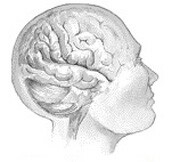RALEIGH, N.C., June 9, 2014 /PRNewswire/ -- BioDelivery Sciences International, Inc. (BDSI) (NASDAQ: BDSI) received approval of the New Drug Application (NDA) for BUNAVAIL™ (buprenorphine and naloxone) buccal film (CIII) from the U.S. Food and Drug Administration (FDA). BUNAVAIL is indicated for the maintenance treatment of opioid dependence and should be used as part of a complete treatment plan to include counseling and psychosocial support. BDSI expects to launch BUNAVAIL late in the third quarter of 2014.
BUNAVAIL was designed using BDSI's advanced drug delivery technology, BioErodible MucoAdhesive (BEMA®), allowing for the efficient and convenient delivery of buprenorphine while potentially overcoming some of the administration challenges presented by the sublingual (under the tongue) dosage forms currently available. BUNAVAIL has twice the bioavailability (drug absorbed into the body) of buprenorphine compared to Suboxone, the market leader in this category. As a result of the improved absorption of buprenorphine with BUNAVAIL, which is the direct result of the BEMA technology, plasma concentrations of buprenorphine comparable to Suboxone can be achieved with half the dose, which may help to reduce the potential for misuse and diversion and potentially lessen the incidence of certain side effects.
BUNAVAIL is the first and only formulation of buprenorphine and naloxone for buccal (inside of the cheek) administration. The ability of BUNAVAIL to stick on the inside of the cheek, unlike sublingual products that need to be kept in place under the tongue until they dissolve, allows patients to talk, swallow and go about normal daily activities while the medication is being consistently absorbed.
"BUNAVAIL is a novel treatment approach for the more than two million people in the U.S. afflicted with opioid dependence," said Gregory Sullivan, M.D., principal investigator of the Phase 3 BUNAVAIL safety study and an addiction specialist and Medical Director of Parkway Medical Center in Birmingham, Alabama. "BUNAVAIL utilizes advanced drug delivery technology to fulfill an important need for treatment options with improved drug absorption and patient convenience, and as such, may help to address some of the challenges associated with sublingual administration and possibly help improve treatment compliance."
Dr. Sullivan continued, "BUNAVAIL was assessed in a Phase 3 clinical study in 249 patients who were converted from Suboxone sublingual tablet or film to BUNAVAIL. In this study, BUNAVAIL demonstrated favorable safety and efficacy in the maintenance treatment of opioid dependence as demonstrated by the high study retention rate and the low frequency of patients with positive urine tests for non-prescribed opioids over the 12-week period. The majority of patients who participated found BUNAVAIL easy to use and pleasant in taste. Additionally, prior to conversion to BUNAVAIL, about 40 percent of patients were experiencing constipation while receiving Suboxone tablet or film, a common problem with chronic opioid use, and more than two-thirds of these patients reported resolution of symptoms when they switched from Suboxone to BUNAVAIL."
"FDA's approval of BUNAVAIL is another example of how we are creating products to help patients in their battle to overcome debilitating medical issues such as opioid dependence and is a tribute to the dedication and focus of our employees," said Dr. Mark A. Sirgo, President and Chief Executive Officer of BDSI. "This is also a transformative event for BDSI, as we will be launching a product with our own dedicated sales force for the first time, which we believe will lead to significant value creation for our shareholders. We plan to share the details of our overall commercial plans later this summer as we approach the launch of BUNAVAIL. I am confident that with the experience of the marketing and sales resources we have in place, we will have a positive launch and overall market reception for BUNAVAIL."
"Opioid addiction is a serious issue that can often be difficult to treat," said Tim Lepak, President of the National Alliance of Advocates for Buprenorphine Treatment (NAABT). "People with opioid addiction face significant challenges in their efforts to rebuild their lives and achieve sustained addiction remission. It is important that patients have treatment options that are effective, safe and easy to use in order to provide them with their best chance for success. I believe people addicted to prescription opioids and heroin will welcome BUNAVAIL as a novel treatment option."
BUNAVAIL is the first mucoadhesive buccal film formulation of buprenorphine to compete directly with Suboxone sublingual film. In 2013, sales of Suboxone sublingual film increased to more than $1.3 billion in the U.S. while the total market grew to more than $1.7 billion, driven by a 14 percent increase in prescriptions according to data from Symphony Health Solutions.
BDSI plans to launch BUNAVAIL in late third quarter 2014 and anticipates peak sales potential of BUNAVAIL of up to $250 million in the U.S. BDSI will also begin entertaining commercial partnerships for BUNAVAIL outside of the U.S. In March 2014, BDSI announced it had entered into an agreement with Quintiles to support the launch of BUNAVAIL. Under terms of the agreement, Quintiles will provide a range of services to support the launch and subsequent commercialization of BUNAVAIL in the U.S., including recruiting and training a field sales force. In the U.S., nearly 5,000 physicians are responsible for approximately 90 percent of prescriptions for buprenorphine products for the treatment of opioid dependence, according to recent data from Symphony Health Solutions.
Separately, BDSI has entered into an agreement with Ashfield Market Access to provide managed markets and trade support for BUNAVAIL. Ashfield Market Access, which is led by industry veterans including Steve Stefano, who led GlaxoSmithKline's managed markets group for more than 20 years, will be responsible for executing a payer strategy aimed at maximizing patient access to BUNAVAIL.
BDSI will be providing additional information regarding the FDA approval of BUNAVAIL and commercialization plans in the upcoming weeks. BDSI will be presenting on Wednesday, June 11 at 3:20 PM Central Time (4:20 PM Eastern Time) at the 34th Annual William Blair Growth Stock Conference in Chicago which will be webcast live and can be accessed at www.bdsi.com. BDSI also plans to hold an analyst and investor update meeting later in the summer to provide additional insight into plans for the late third quarter launch of BUNAVAIL.
About BioDelivery Sciences International
BioDelivery Sciences International (NASDAQ: BDSI) is a specialty pharmaceutical company that is leveraging its novel and proprietary patented drug delivery technologies to develop and commercialize, either on its own or in partnerships with third parties, new applications of proven therapeutics. BDSI is focusing on developing products to meet unmet patient needs in the areas of pain management and addiction.
BDSI's pain franchise consists of three products, two of which utilize the patented BioErodible MucoAdhesive (BEMA) drug delivery technology. ONSOLIS (fentanyl buccal soluble film) is approved in the U.S., Canada, E.U. (where it is marketed as BREAKYL) and Taiwan (where it will be marketed as PAINKYL), for the management of breakthrough pain in opioid tolerant, adult patients with cancer. The commercial rights are licensed to Meda for all territories worldwide except for Taiwan (licensed to TTY Biopharm) and South Korea (licensed to Kunwha Pharmaceutical Co.).
BEMA Buprenorphine is in Phase 3 clinical trials for the treatment of moderate to severe chronic pain and is licensed on a worldwide basis to Endo Pharmaceuticals. Clonidine Topical Gel for the treatment of painful diabetic neuropathy is currently in Phase 3 development.
BDSI's approved product for the maintenance treatment of opioid dependence is BUNAVAIL, which was approved by the FDA in June 2014 and is expected to be commercially launched during late third quarter 2014.
BDSI's headquarters is located in Raleigh, North Carolina. For more information visit www.bdsi.com.
About Opioid Dependence
Opioid dependence is a significant and undertreated condition in the U.S., with over two million people dependent on opioids in 2012 according to the National Institute on Drug Abuse (NIDA). Suboxone, which was approved for the treatment of opioid dependence in 2002, has been shown to be a highly effective treatment option and, as a result, currently generates annual sales of more than $1.3 billion according to data from Symphony Health Solutions. According to the World Health Organization, opioid dependence is a complex health condition that often requires long-term treatment and care. The treatment of opioid dependence is important to reduce its health and social consequences and to improve the well-being and social functioning of people affected. The main objectives of treating and rehabilitating persons with opioid dependence are to reduce dependence on illicit drugs; to reduce the morbidity and mortality caused by the use of illicit opioids, or associated with their use, such as infectious diseases; to improve physical and psychological health; to reduce criminal behavior; to facilitate reintegration into the workforce and education system and to improve social functioning. The achievement of a drug free state is the ideal and ultimate objective.
About BUNAVAIL
INDICATION
BUNAVAIL (buprenorphine and naloxone) buccal film (CIII) is indicated for the maintenance treatment of opioid dependence and should be used as part of a complete treatment plan to include counseling and psychosocial support.
Prescription use of this product is limited under the Drug Addiction Treatment Act (DATA).
IMPORTANT SAFETY INFORMATION
Keep BUNAVAIL (buprenorphine and naloxone) Buccal Film (CIII) out of the sight and reach of children. Ingestion of BUNAVAIL by a child may cause severe breathing problems and death. If a child takes BUNAVAIL, get emergency help right away.
Do not take BUNAVAIL if you are allergic to buprenorphine or naloxone, as serious negative effects including anaphylactic shock, have been reported.
Do not take BUNAVAIL before the effects of other opioids (e.g., heroin, methadone, oxycodone, morphine) have lessened as you may experience withdrawal symptoms.
Do not drive, operate heavy machinery, or perform any other dangerous activities until you know how BUNAVAIL affects you.
BUNAVAIL contains buprenorphine, an opioid that can cause physical dependence. Your doctor can tell you more about the difference between physical dependence and drug addiction. Do not stop taking BUNAVAIL without talking to your doctor. You could become sick with uncomfortable withdrawal symptoms because your body has become used to this medicine.
Do not switch from BUNAVAIL to other medicines that contain buprenorphine without talking with your doctor. The amount of buprenorphine in a dose of BUNAVAIL is not the same as the amount of buprenorphine in other medicines. Your doctor will prescribe a dose of BUNAVAIL that may be different than other buprenorphine-containing medicines you may have been taking.
BUNAVAIL can cause serious life‐threatening breathing problems, overdose and death, particularly when taken by the intravenous (IV) route in combination with benzodiazepines, sedatives, tranquilizers or alcohol. You should not drink alcohol while taking BUNAVAIL, as this can lead to loss of consciousness or even death.
Like other opioids (e.g., heroin, methadone, oxycodone, morphine), BUNAVAIL may produce orthostatic hypotension ('dizzy spells') in ambulatory individuals.
Common side effects of BUNAVAIL include headache, drug withdrawal syndrome, lethargy (lack of energy), sweating, constipation, decrease in sleep (insomnia), fatigue and sleepiness.
Because BUNAVAIL contains naloxone, injecting BUNAVAIL may cause serious withdrawal symptoms such as pain, cramps, vomiting, diarrhea, anxiety, sleep problems, and cravings.
BUNAVAIL can be abused in a manner similar to other opioids, legal or illicit. Keep BUNAVAIL in a safe place. Do not give your BUNAVAIL to other people, it can cause them harm or even death. Selling or giving away this medicine is against the law. BUNAVAIL is not recommended in patients with severe hepatic impairment. BUNAVAIL may be used with caution for maintenance treatment in patients with moderate hepatic impairment.
Before taking BUNAVAIL, tell your doctor if you are pregnant or plan to become pregnant. If you become pregnant while taking BUNAVAIL, tell your doctor immediately as there may be significant risks to you and your baby; your baby may have symptoms of withdrawal at birth.
Before taking BUNAVAIL, talk to your doctor if you are breast‐feeding or plan to breast‐feed your baby. BUNAVAIL can pass into your breast milk and may harm your baby. Monitor your baby for increased sleepiness and breathing problems. Your doctor should tell you about the best way to feed your baby if you are taking BUNAVAIL.
This is not a complete list of potential adverse events associated with BUNAVAIL Buccal Film. Please see full Prescribing Information for a complete list.
To report negative side effects associated with taking BUNAVAIL Buccal Film, please call 1-800-469-0261. You are encouraged to report negative side effects of prescription drugs to the FDA. Visit www.fda.gov/medwatch or call 1‐800‐FDA‐1088.
For more information, please see full Prescribing Information and Medication Guide for BUNAVAIL™ Buccal Film (CIII).
Source: BioDelivery Sciences International, Inc.
Posted: June 2014
Related Articles:
Bunavail (buprenorphine and naloxone) FDA Approval History





















